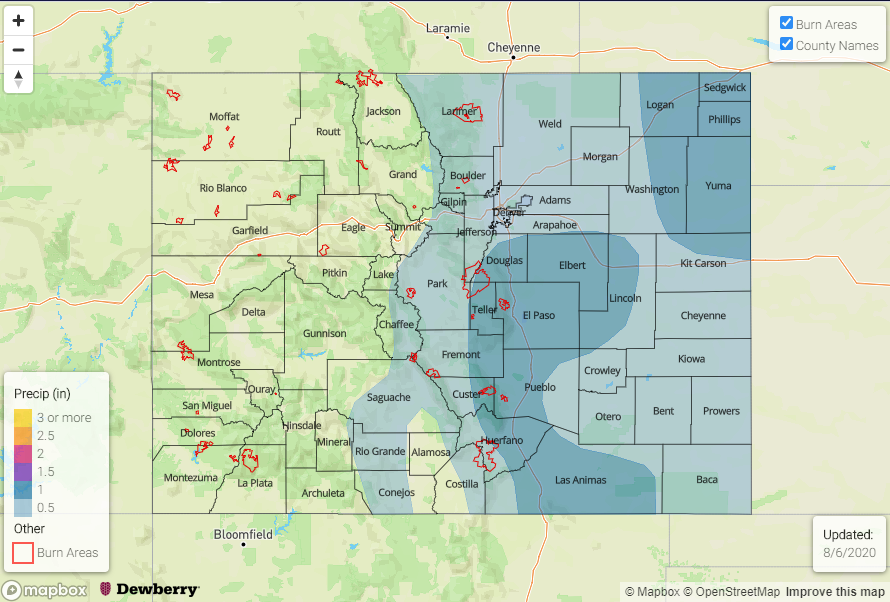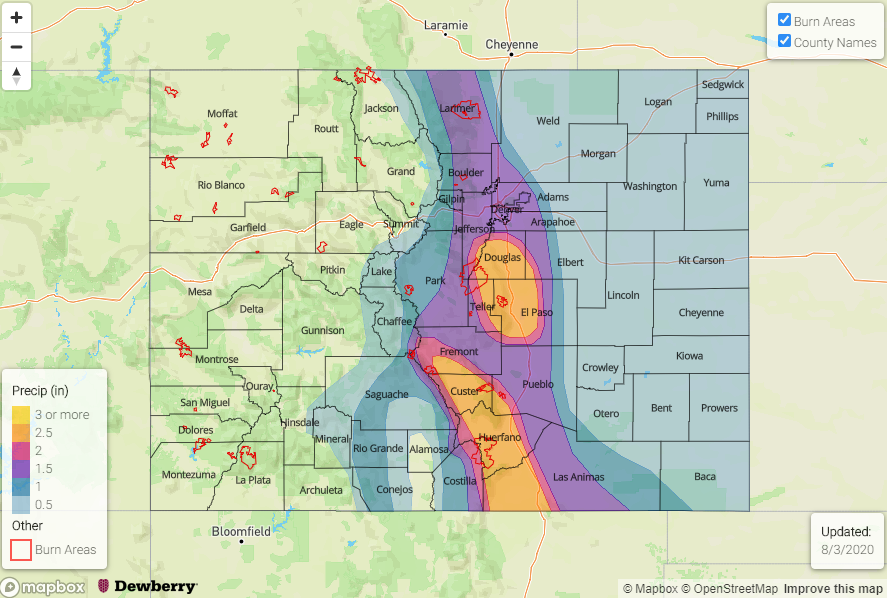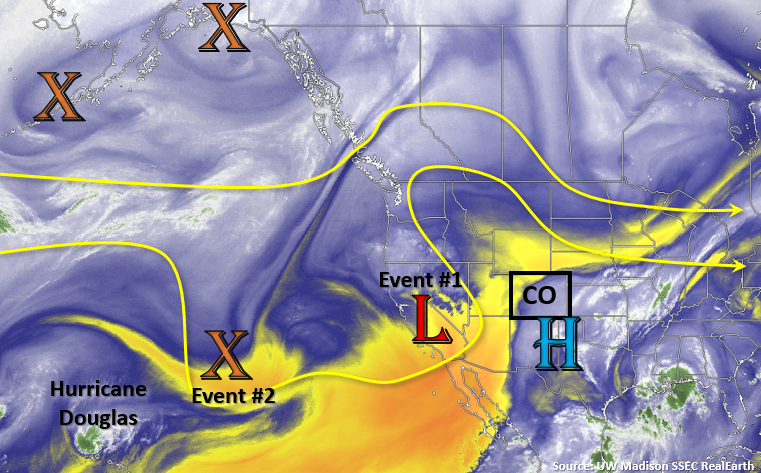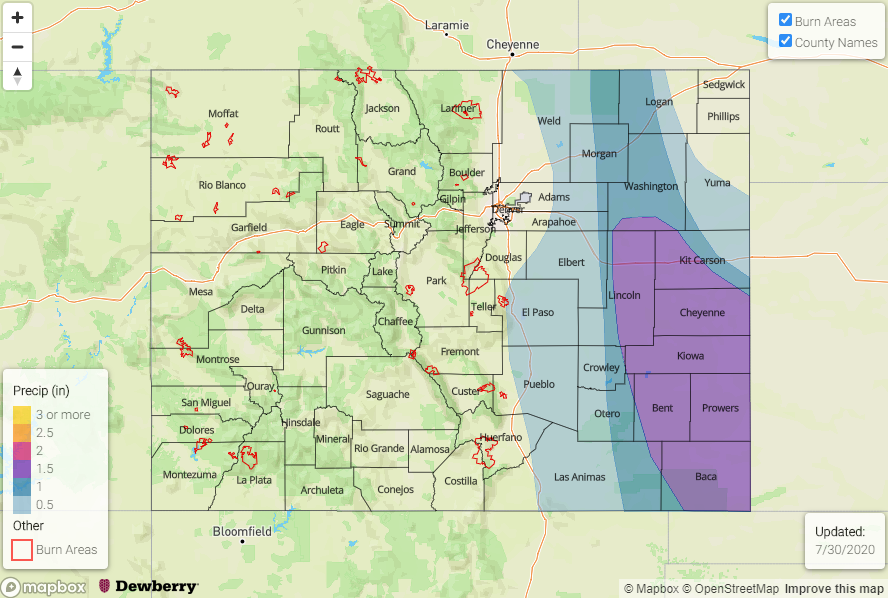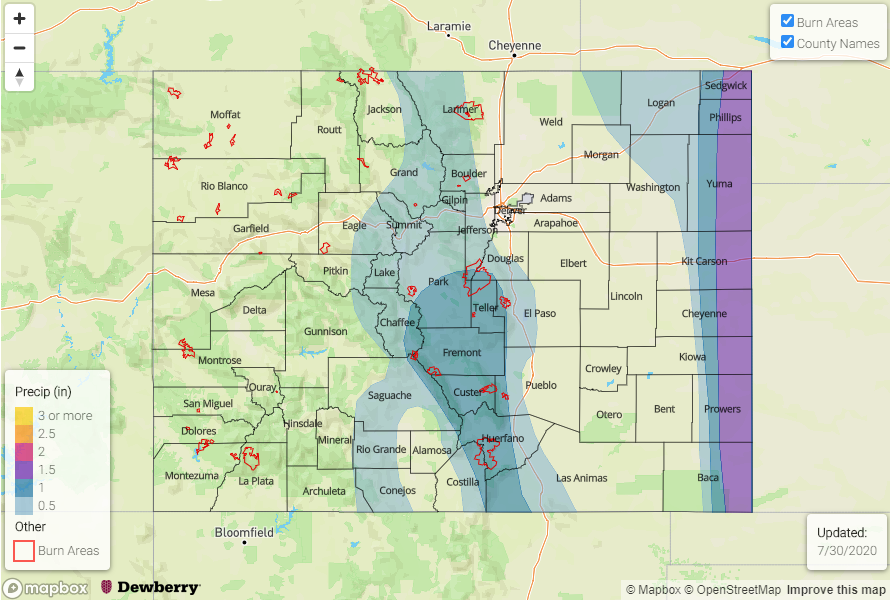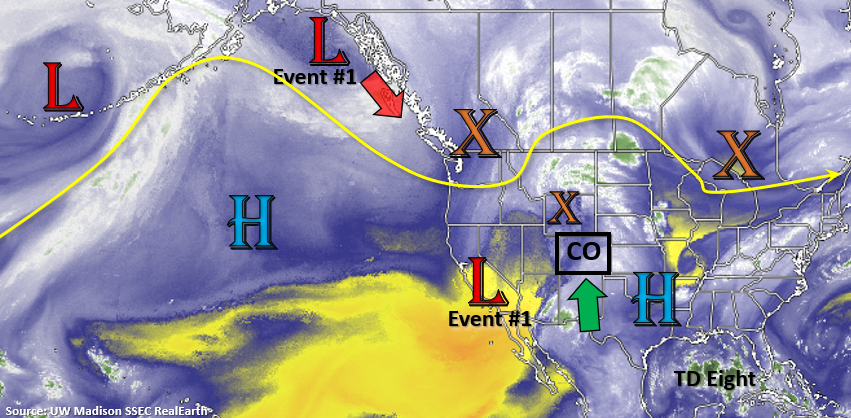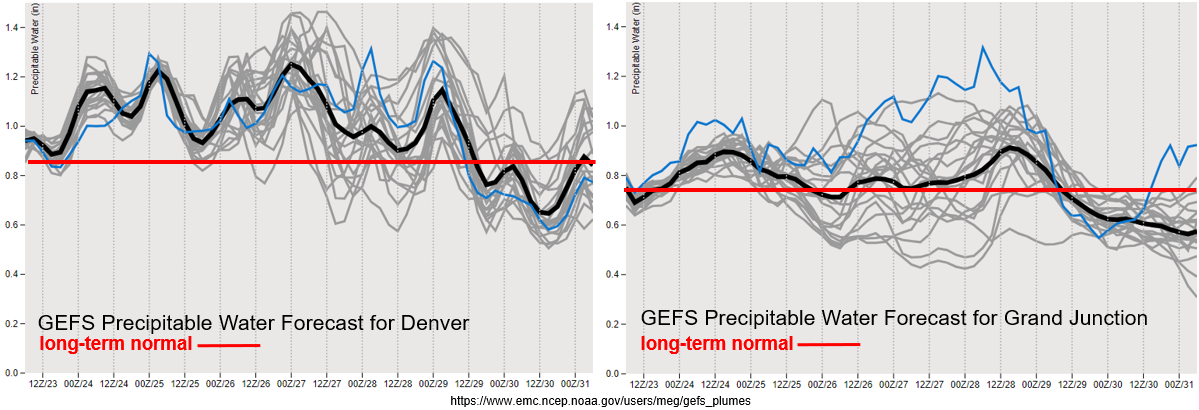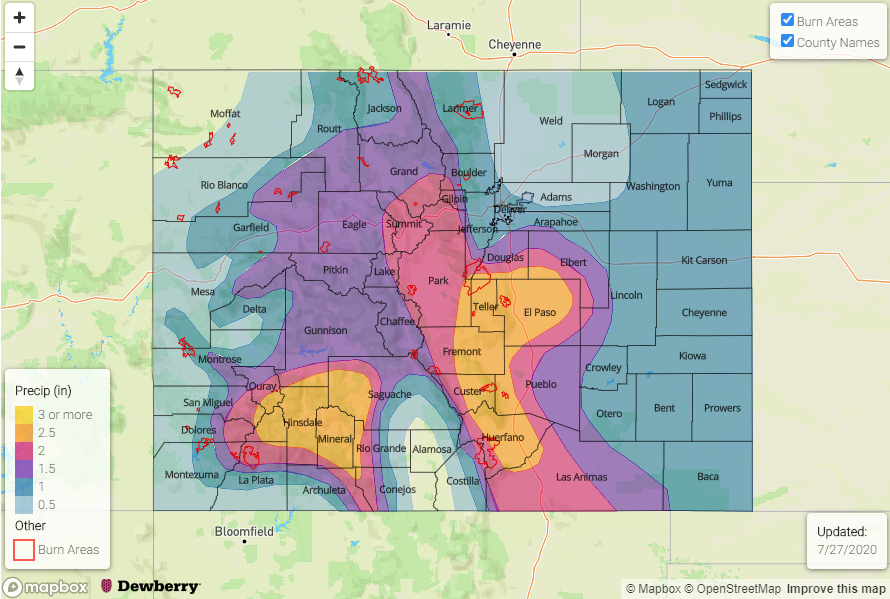Issue Date: Monday, August 3rd, 2020
Issue Time: 3PM MDT
Valid Dates: 8/4– 8/18

The shortwave to our north (red dashed line) will be well north and east of the state by tomorrow. It will be replaced by an incoming Low (Gulf of Alaska) and a minor upper trough (Event #1), which will help rebuild a weaker ridge over Colorado for the rest of this week. The ridging pattern from Wednesday into Friday will continue the setup we saw for this last event, dry to the west and moist to the east as disturbances move through the WNW flow. The flow should become more westerly tomorrow evening, rather than NW, as a stronger shortwave moves through the flow. This will help push storms further into the eastern plains where a lee cyclone will pull in some higher moisture. With another passing jet streak, some severe thunderstorms will be possible that could linger into the evening and overnight hours.
By Saturday, the ridge starts to strengthens to our south, which will cause a decrease in moisture over the state as southwesterly and westerly flow increases. While some weak showers will likely still be able to form over the mountains each afternoon with residual moisture, there should be quite the downtick in rainfall for the weekend. Starting next week, the weak ridge axis looks to be pushed slightly east, which will allow for some higher PW values to return to the state for Event #2. Some days will likely have a higher flood risk than others, but to pinpoint disturbances moving through the flow this far out is very difficult. So, at this time there is No Apparent Threat.

It’s the time of year when we start to see the decreasing trend in PW values on the backside of the monsoon. As seen in the last system, PW values continue to remain low over western Colorado and really drop off into this weekend. Thankfully, there are no days with strong upper flow mixing down to the surface, so critical fire weather is not anticipated. However, dry fuels are abundant and are really driving the Pine Gulch Fire. With the drought still in place over the majority of the state and a long, hot week ahead, elevated fire danger is forecast. Please use caution with any open flames or activities that could cause a spark, and pay attention to fire bans. The lone, heavy rainfall event last week did little to alleviate the ongoing drought.
Over eastern Colorado, it looks like southeasterly and easterly flow at the surface really is helping keep the higher moisture pressed up against the foothills the next two days. Tomorrow, a lee cyclone is expected to develop over the eastern plains, which will continue to pull in high moisture on its east and north side, as well as enhance convergence, as seen by the PW values greater than inch at Denver. Thus, an Elevated flood threat has been issued due to the increased moisture and upper dynamics combining over the eastern plains. An Elevated flood threat should suffice for Wednesday onward with a higher likelihood of storms moving into the adjacent plains/higher moisture environment with the more westerly flow aloft. The timing of shortwaves during this period will cause on and off flood threats this week over the plains.
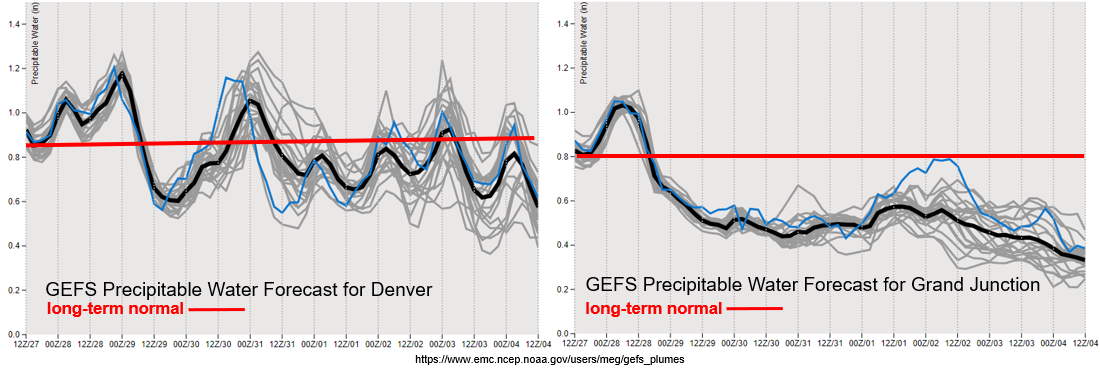
Event #1: Tuesday – Friday (8/4 – 8/7)
Elevated Threat as a lee cyclone and continued southeasterly/easterly flow at the surface holds higher moisture in place.
Looking at some more severe thunderstorms tomorrow over the eastern plains. Plenty of shear, moisture, and mid-level energy will combine to help create some large hail and damaging outflow winds. Best chance for storms will be over the far eastern plains where the lee cyclone will pull in the highest dew points. Even though storms will be moving relatively quickly with a jet streak aloft, they will still be able to produce rain rates just under 2 inches in an hour. Thus, a Moderate flood threat has been issued. For the rest of the week, disturbances will move through the flow and more WNW steering flow will help storms travel further in the plains where there is better moisture. Passing shortwaves and fronts/boundaries will likely create pockets of heavy rainfall over the plains. This event is less of a threat for recent burn areas when compared to this last event.
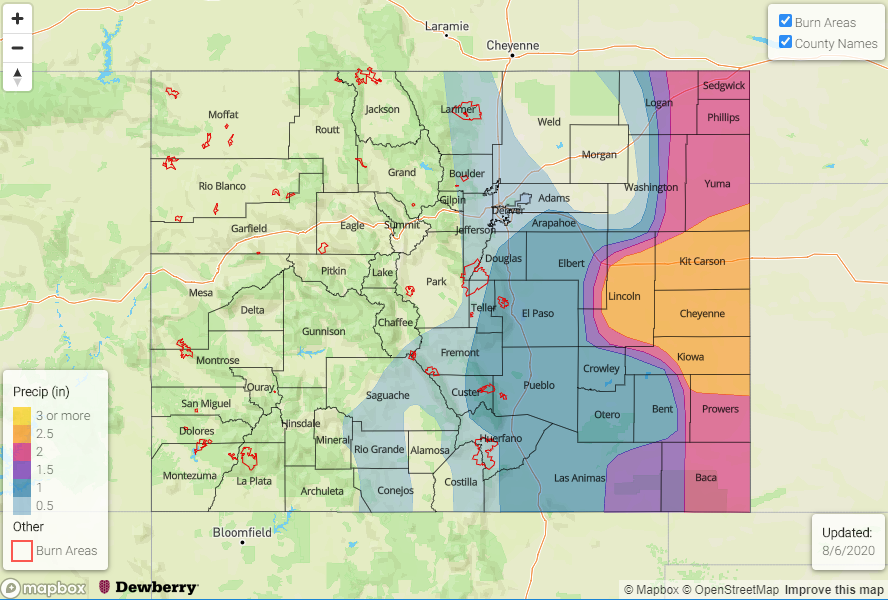
Event #2: Monday – Thursday (8/10 – 8/13)
No Apparent as a slight ridge shift allows some higher moisture to return to the area.
At this time, no thinking this event will have much of a flood threat. This is especially true over western Colorado where dry conditions in the boundary layer will cause storms to produce more wind/evaporation than rainfall after the moisture begins to return. There should be an uptick in activity over the southern/eastern San Juan Mountains for this event and other mountainous areas south. As flow becomes more northwesterly when the High rebuilds over the desert Southwest, more rainfall will be possible over eastern Colorado as disturbances help return the low-level moisture to the area.
